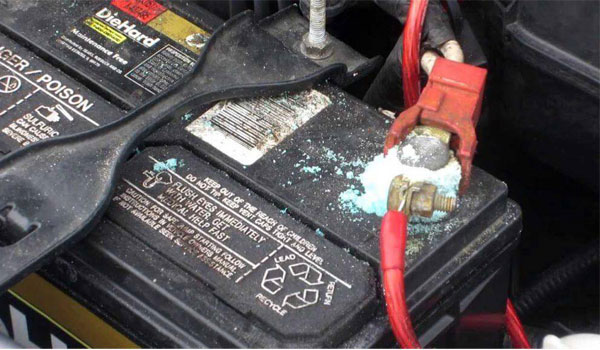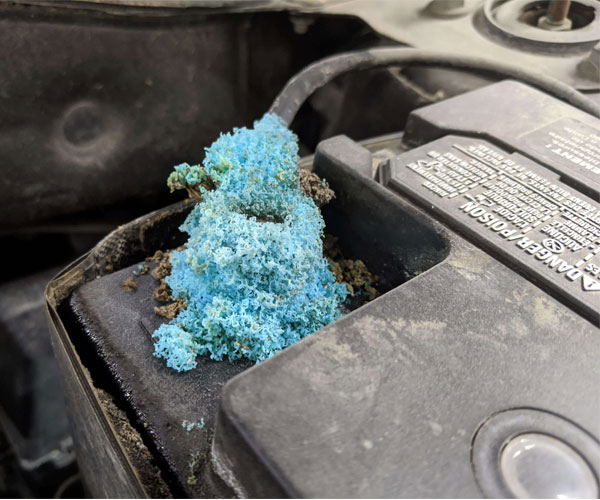Corrosion happens on terminals for a variety of causes, and the corrosion itself varies in appearance, colour, and texture depending on the source.
The most noticeable problem with a battery that is corroded is the danger of the vehicle not starting when you want it to. Of course, you know that this could happen any time, the most embarrassing being when the light shows green and you want to move, but that is just the tip of the iceberg.

Your car’s onboard computer can develop issues too and bail on you at any time as a result of the problematic battery.
If your battery is leaking, old enough to be replaced, or the corrosion has eaten too deep into the terminals, then you need to get a replacement ASAP.
The top six causes of battery deterioration are shown below.
Leakage of Electrolytes
Leaks are still a possibility, even though batteries are designed to keep the acid in a safe and secure container. Corrosion will occur if the electrolyte leaks out and collects around the battery terminals owing to a lack of regular maintenance or damage.
Even though the chances of this happening with a sealed maintenance-free battery are slim, it is feasible. The risk of spilling electrolyte onto the terminals is larger in batteries that need to top out the electrolyte with water on a regular basis. The presence of electrolyte near the terminals will promote corrosion in both circumstances.
A Chemical Reaction In The Copper Clamps
The majority of high-quality clamps used to connect the battery to the wires are composed of copper. Copper, according to our understanding of chemistry, cannot corrode on its own. However, copper sulfate is formed in the presence of sulfuric fumes from a leaking battery, with a little help from the current passing through the copper clamps, resulting in battery terminal corrosion. The bluish-green crystals that grow around the terminal are the culprit.
Overcharging
Charging batteries is no exception to the rule that too much of anything is harmful. Overcharging can cause battery deterioration, which is surprising yet real. The temperature of the battery will rise, causing the electrolyte to increase in volume. And, as you may know, pressure always finds a way out; whether the battery is sealed or flooded, the electrolyte will eventually escape through vents or fissures. In the end, it is the terminals who face the brunt of the punishment.

Overfull Battery
Too much water in your rechargeable battery can cause problems. It’s important to only top off the electrolyte till the highest markers and then stop. It’s best to top out the electrolyte on a cool day to allow room for the liquid to expand when the battery’s temperature rises during use. Any excess coming out of the vents will corrode the terminals, which are constructed of metal.
Hydrogen Gas
The battery’s reaction produces hydrogen gas. There is some in the air we breathe every day, and in little amounts, it is rather innocuous. However, it can cause corrosion when it mixes with other gases, no matter how harmless it appears. It usually implies charging concerns; if it forms on the positive terminal, it could suggest that the battery is overcharging, while if it forms on the negative terminal, it could indicate that the battery is undercharging.
Battery Age
If you’ve had the same battery for more than 5 years, you shouldn’t be surprised to see the terminals corrode as the battery’s performance drops, regardless of how well you maintain your vehicle. Batteries have a 5-year lifespan, but your age and other factors affect how long they last.

 News1 week ago
News1 week ago
 News1 week ago
News1 week ago
 News5 days ago
News5 days ago
 Celebrities Auto1 week ago
Celebrities Auto1 week ago
 News1 week ago
News1 week ago
 News6 days ago
News6 days ago
 Concept Cars1 week ago
Concept Cars1 week ago
 Celebrities Auto6 days ago
Celebrities Auto6 days ago

